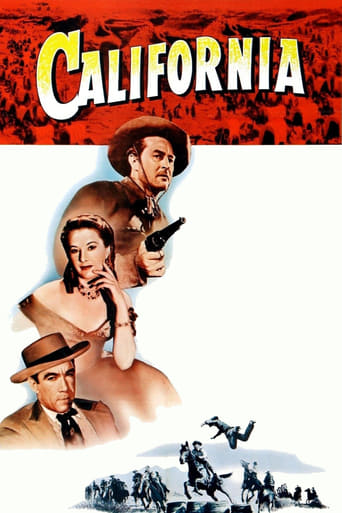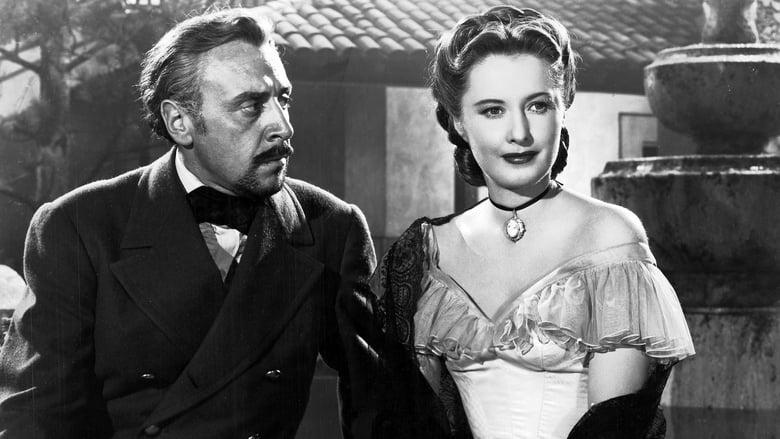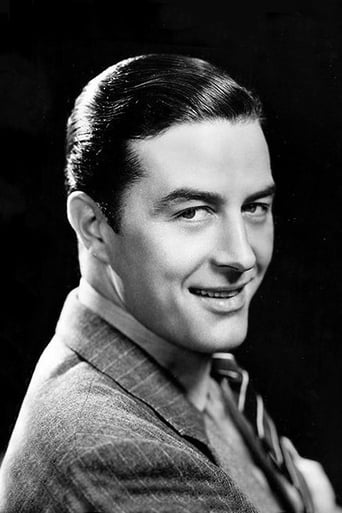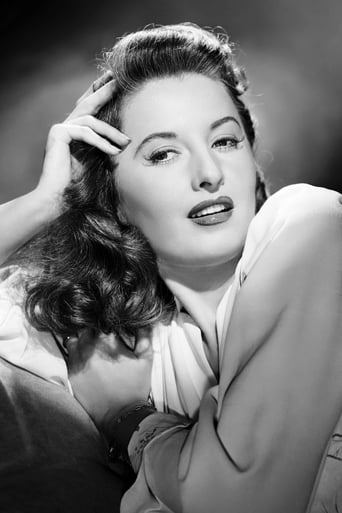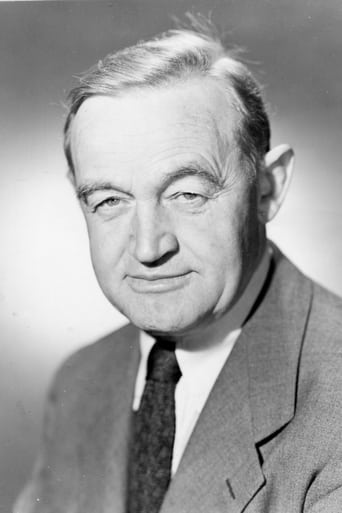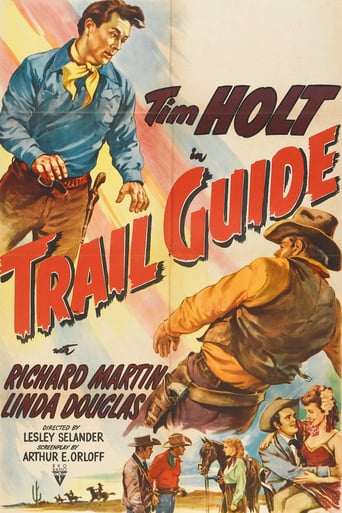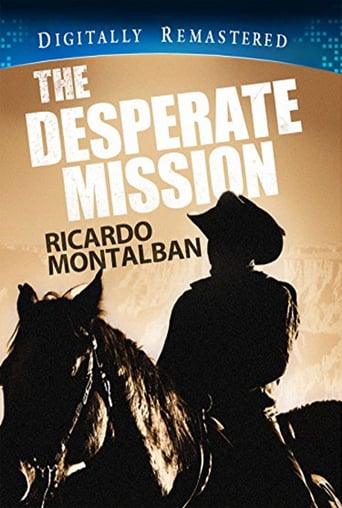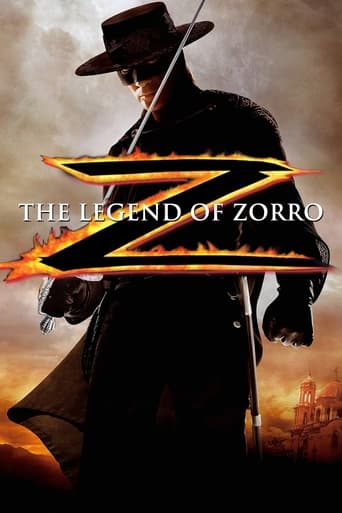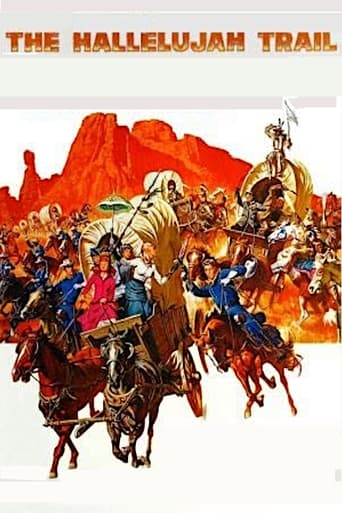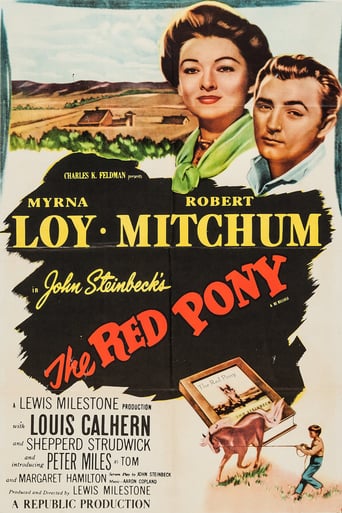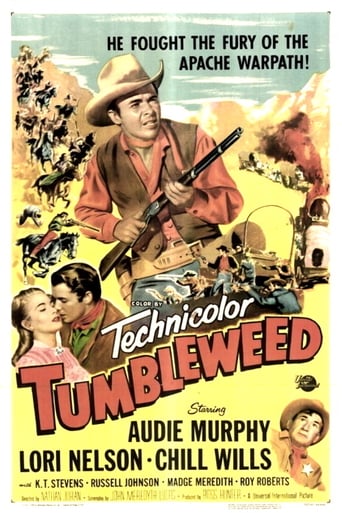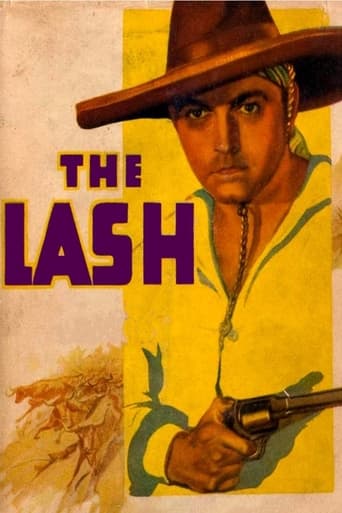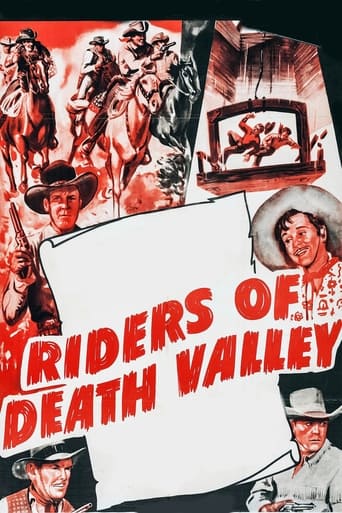California (1947)
"Wicked" Lily Bishop joins a wagon train to California, led by Michael Fabian and Johnny Trumbo, but news of the Gold Rush scatters the train. When Johnny and Michael finally arrive, Lily is rich from her saloon and storekeeper (former slaver) Pharaoh Coffin is bleeding the miners dry. But worse troubles are ahead: California is inching toward statehood, and certain people want to make it their private empire.
Watch Trailer
Free Trial Channels
Cast


Similar titles
Reviews
In truth, there is barely enough story here to make a film.
It is not only a funny movie, but it allows a great amount of joy for anyone who watches it.
I wanted to like it more than I actually did... But much of the humor totally escaped me and I walked out only mildly impressed.
If you're interested in the topic at hand, you should just watch it and judge yourself because the reviews have gone very biased by people that didn't even watch it and just hate (or love) the creator. I liked it, it was well written, narrated, and directed and it was about a topic that interests me.
Director: John Farrow. Producer: Seton I. Miller. Copyright 21 February 1947 by Paramount Pictures Inc. New York opening at the Rivoli: 14 January 1947. U.S. release: 21 February 1947. U.K. release: 14 April 1947. Australian release: oddly no official release date despite the fact that this was one of Paramount's prestige releases of the year. Sydney opening at the Prince Edward: 18 April 1947 (ran four weeks). 8,758 feet. 97 minutes.SYNOPSIS: A former slave trader's plans to make California his own empire are thwarted by a moralistic army-deserter and an idealistic grape-grower.NOTES: Stanwyck's first color film. Filmed on locations (including Sedona) in Arizona.COMMENT: Much admired by many critics, including my colleague Barrie Pattison who swears that California is "one of the supreme achievements of mankind". I am of a lesser opinion. True, Farrow's direction is wonderfully fluid, with at least four or five extremely long, extremely elaborate and complicated one-takes. But their dramatic impact is often dissipated by a faulty script which lets Farrow down on a number of fronts: Firstly, the narrative construction is oddly episodic, with various segments separated by surrealistic chorales. Now I'm all in favor of experimentation in the cinema, but it doesn't gel here. All this extolling the virtues of California by an off-camera chorus ("Get my bible and banjo... It's California, or bust!"), doesn't always sit too well with a petty tale of a gambling hussy on the wagon train. (Of course not all the singing is done off-camera. The wagon folks themselves render "I Should Have Stood in Massachusetts", while saloon singer Stanwyck — wearing gorgeous gowns — is expertly dubbed for "Lily-I-Lily-I-Oh" and the haunting ballad, "Said I To My Heart, Said I"). The second problem with the script is that, despite its length, characterization is so sketchy, it's hard to get involved with the principals. Milland doesn't help much. Acquits himself well enough in the action spots, true, but otherwise just glumly rattles off his lines. Stanwyck plays with more fire in her spirit, and looks mighty fetching in Technicolor, but the script gives her such threadbare cloth to fashion, it's no surprise her performance makes little impression. Ditto Barry Fitzgerald. The one player who does come across strongly is George Coulouris who makes his Captain Coffin not only truly menacing, but even truly human. Yet even here the script tries to undermine the character (what a pity the haunting of naked feet pattering across the deck is only alluded to but once). Fortunately, such is Coulouris' skill he manages to force our interest interest upon the captain right through to his anticipated end. The other villains are distinctly minor by comparison, but Dekker and Muir manage them ably.The script's third vice is its overly verbose dialogue. Practically all of Fitzgerald's part could go with no loss of interest or continuity, and the scissors could likewise be taken to some of the principals' exchanges, plus three or four small but unnecessary scenes. Alas, in the print under review, Rennahan's once-lustrous color photography is now somewhat less than satisfying. Some superb images remain, however. The panning shot of all the furniture thrown from the wagons to facilitate the gold rush, for example. A flawed film, but still vastly entertaining. Superb sets, and unstintingly lavish production values help.
This is a case where I feel like other reviewers have watched a different movie called "California" than the one I saw. The picture I enjoyed was a top-notch "A" western with an excellent cast, gorgeous Technicolor cinematography, spectacular California scenery, lively action, good pacing, and an intelligent, adult story.At the top of the cast Ray Milland, Barbara Stanwyck, and Barry Fitzgerald, were at the peak of their careers. All three had garnered Academy Award honors within the past few years before "California's" early 1947 release. Milland was coming off his best actor award for Lost Weekend (1945), while Fitzgerald won best supporting actor for Going My Way (1944) and also got a best actor nomination for the same role! Stanwyck, a perennial bridesmaid of the Academy had received best actress nominations for Ball Of Fire (1941) and Double Indemnity (1944). "California" is a good showcase for their talents, each doing what he or she did best -- Ray the mild-mannered but hard-edged tough guy, Barry the lovable Irishman, and Barbara the hard broad who may or may not be hiding a heart of gold. Good support and stalwart villainy is provided by George Coulouris and Albert Dekker with a large cast of other supporting players and extras.Some people can't picture Ray Milland as an appropriate western lead because of his British accent, even though it had became slight by the late 1940's when he had be living in the United States for two decades. But lots of people in the West would have had British and other foreign accents. Remember, we were and still are a nation of immigrants. Besides which Ray was imminently qualified to play westerns by his real life experiences. Having served several years in a crack British cavalry regiment in the 1920's, he was an expert horseman, and it shows by the way he sits a steed in "California". And he certainly knew which end of a gun the bullets came out of. A crack marksman, he helped his regiment win several prestigious shooting matches in his army days. Interestingly, he actually plays a professional trick shot artist in another western, Copper Canyon (see my review).John Farrow's usual efficient direction and Eda Waren's editing keep the story moving along at a sharp pace. The script by Frank Butler and Theodore Strauss provides an intelligent, adult story with literate dialog. It gives an accurate, compelling picture of the California gold rush and the gold fever gripping immigrants to the Pacific Coast, as well as the movement for California statehood, a plot by the baddies for an armed overthrow of the government, and a torrid love triangle. As the intense, dark melodramas now known as film noir were at the height of their popularity when this western was filmed, the script endows the principles of the love triangle, Milland, Stanwyck, and Coulouris, with shady pasts. Milland's character, it turns out has deserted the Army. Stanwyck has been thrown out of every town she ever parked in for being -- shall we say charitably -- a floozy. Coulouris, villain enough as it is, has an even darker past as a slave ship captain. And he is now going slowly off his nut remembering the cries of the chained slaves and his fears they would rise up and get him. Dekker, occasionally a leading man or second lead, but more often a polished villain, is wasted here as Coulouris's former first mate and brutish henchman. Since Coulouris is always a bit over the top, perhaps "California" would have been better served if Dekker had had his role.The script and Farrow's direction gives us just the right blend of dramatics and action. A rousing, old-time, full-bodied score by Victor Young helps move it along. Unlike other reviewers, I found the frequent outbursts of singing by both on-screen characters and an unseen chorus an asset to the picture, adding life and color and even historical accuracy. Some in this history challenged generation may not realize that in the days before people had television, computers, radio, movies, or even phonographs, they had to entertain themselves. They sang all the time, walking down the street, in their yards, in barber shops, at socials, around campfires (as in "California"), and in saloons. Even the meanest of saloons could usually scratch up some kind of band.The costumes, sets, firearms, gun leather, lamps and other accouterments in "Callifornia" show an unusual degree of historical accuracy for a western of this era. No one has a repeating rifle, all muzzle loaders or crude breech loaders. Cap and ball revolvers are used in the closeups at least -- never mind they were not the exact models for 1849. You other gun nuts: in how many other movies have you seen a Hall breech loader? Good effort in this department.Ray Rennahan, who did the camera work, gets credit for the unusually fine color cinematography, but with Natalie Kalmus on board as the Techniclor consultant, superb color was insured. The Technicolor Corporation required a consultant on every movie using their patented process, and Mrs. Kalmus, ex-wife of the inventor of Technicolor, was usually it. She was known around the studios as a bossy, irritating old dame, who interfered in set designs, camera set-ups, costume color and materials, prop selection, and virtually every other aspect of a color filming. She must, nevertheless, have known what she was doing. Every picture with her name on it will have muted, perfectly co-ordinated, precisely lighted, and generally superior color. After all, the studio technicians of the 1940's, as skilled as they were in black and white filming, had little experience with color. They actually needed a Natilie Kalmus, like it or not."California" in an A-1 Technicolor western, a visual treat and smooth, exciting entertainment from Hollywood's finest era.
Falling somewhere in director John Farrow's western filmography slightly above "Copper Canyon" (which, like this film, stars Ray Milland) and far below "Hondo", there just isn't a lot to say for good or ill about this relatively unambitious western drama. While positioning itself as a serious picture in terms of theme, it conforms in every way to standard melodrama formulas and fails to present a memorable villain or fundamental conflict. Nice technicolor photography, stylish flourishes from the director, and not even the great Barbara Stanwyck can save this film from being just slightly more than mediocre.Stanwyck plays Lily, a much maligned singer trying to make it big in California off her legs and her pipes where all the men are trying to bring in satchels of gold. Milland is Jon Trumbo, a gambler who deserted from the army and spends half the movie hiding from them and the other half brazenly running a tavern in town. Barry Fitzgerald is third billed but basically drags the movie down into unintentional farce with his mannerisms, while on the other end of the spectrum George Coulouris is cast as an intriguingly written villain but ends up underplaying the role to death.Farrow can always be relied upon for brief moments of misogyny like the one in this movie where Stanwyck is slapped and then shown rubbing her cheek as if she was getting masochistic pleasure from it. Generally speaking this is one of Stanwyck's duller roles from the 40s. So much more could be done with her in a western, as for example in Anthony Mann's "The Furies" and Sam Fuller's "Forty Guns." Here Farrow forces her into a rather dull 40s version of an independent woman that rings hollow.Milland was a good western hero; he played these roles with a bit more realism and less projected "integrity" than most B movie cowboys tended to do. Unfortunately in this movie it's like he's searching for a moment to really do some acting but just can't find it. Farrow usually has a good sense of film economy but in this film it seems like the energy of a lot of the scenes is amped too high and there's not much rhythm to the film as a whole. However the reason this film is much better than "Copper Canyon" is because Milland can make better scenes with Stanwyck in this movie than he can with Hedy Lamarr in that one. This film isn't any worse than most westerns and it's better than quite a lot of them, but you just have to feel that if they had put a big more effort into the whole thing it could have been a lot better. Stanwyck is in this dull role, and you have an actor like Anthony Quinn in a role that barely exists. Meanwhile you have Coulouris who is probably the most boring actor in the movie playing the most interesting character. I think the film could have focused more on him, but it was probably written down since they couldn't get a real star.Worthy entertainment with low expectations.
Definitely NOT a great movie, but very enjoyable, especially if one is a Stanwyck fan. Cinematography bounced back and forth from lush, to "quick, get it done" shots.Ray Milland did not quite cut it as the hardened trail boss and buffalo hunter. But maybe that's because his character really is not-he deserted from the army for getting involved with a married woman. Stanwyck shines as the self-reliant lady gambler and flirt who has been tossed around her whole life, with a few exceptions.Yes the movie is rather corny, but let's face it the movie industry was right in the middle of the Macarthy era and needed safe material to work with. It DID give a rather honest perspective of how many lost sight of what they really had set out for, and how others took advantage, at any cost.

